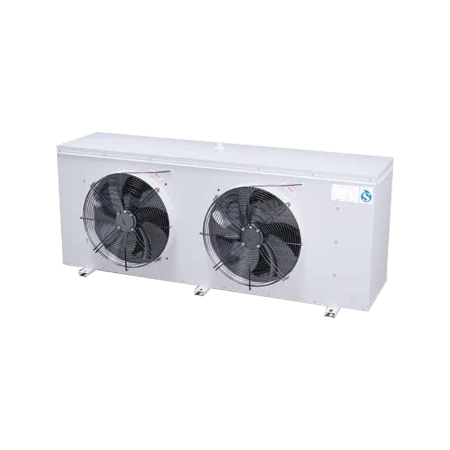How Does an Evaporative Air Cooler Work?
Evaporative cooling technology has been used for centuries, but modern evaporative air coolers have perfected this natural process. These devices work on a simple principle: when water evaporates, it absorbs heat from the surrounding air, creating a cooling effect.
The Science Behind Evaporative Cooling
The cooling process involves three key components: water, air movement, and heat absorption. As warm air passes through water-saturated cooling pads, the water molecules transition from liquid to vapor state, requiring energy which they take from the air. This results in:
- Temperature reduction of 15-40°F depending on humidity levels
- Increased humidity in dry climates (beneficial for comfort)
- Constant fresh air circulation unlike traditional AC systems
Key Components of an Effective System
Zhejiang Jinhao Refrigeration Equipment Co., Ltd, with their expertise in refrigeration technology, understands that quality components make all the difference in evaporative cooling systems. The essential parts include:
- High-density cooling pads for maximum water absorption
- Efficient water distribution system
- Powerful yet quiet fan motors
- Durable water reservoir
- Energy-efficient pump system
Best Evaporative Cooler for Dry Climate Applications
Dry climates are where evaporative air coolers truly shine, offering superior performance compared to traditional air conditioning systems. The arid conditions allow for maximum evaporation potential.
Why Dry Climates Are Ideal
In areas with low humidity (below 50% relative humidity), evaporative coolers can achieve their maximum cooling potential. The performance comparison shows:
| Factor | Evaporative Cooler | Traditional AC |
|---|---|---|
| Energy Efficiency | Uses 50-75% less energy | Higher energy consumption |
| Humidity Impact | Adds beneficial moisture | Removes moisture |
| Air Quality | Continuous fresh air | Recirculated air |
| Installation Cost | 30-50% lower | Higher initial cost |
Selecting the Right Unit
When choosing the best evaporative cooler for dry climate areas, consider these factors:
- Cooling capacity (CFM rating) relative to your space size
- Water tank capacity for continuous operation
- Portability needs for seasonal use
- Additional features like air filtration
- Energy efficiency ratings
Portable Evaporative Cooler vs Window AC: Which is Better?
The choice between these two cooling solutions depends on multiple factors including climate, budget, and specific cooling needs.
Performance Comparison
While both systems provide cooling, their methods and results differ significantly:
- Evaporative coolers add moisture while AC units remove it
- Portable units offer easier installation and mobility
- Window ACs typically have lower maintenance requirements
- Evaporative models are more environmentally friendly
Cost Analysis Over Time
The financial implications of choosing between a portable evaporative cooler vs window AC extend beyond the initial purchase:
| Cost Factor | Evaporative Cooler | Window AC |
|---|---|---|
| Initial Purchase | $150-$800 | $200-$1,500 |
| Installation | Minimal to none | $100-$300 |
| Monthly Energy | $5-$15 | $30-$100 |
| Maintenance | $50-$100/year | $20-$50/year |
How to Maintain Evaporative Air Cooler for Optimal Performance
Proper maintenance is crucial to ensure your evaporative air cooler operates efficiently and lasts for many seasons.
Regular Cleaning Schedule
Zhejiang Jinhao Refrigeration Equipment Co., Ltd recommends this maintenance routine based on their expertise in refrigeration systems:
- Daily: Check water level and quality
- Weekly: Clean or replace cooling pads
- Monthly: Deep clean water reservoir
- Seasonally: Inspect pump and fan motor
- Annually: Complete system checkup
Troubleshooting Common Issues
Understanding how to maintain evaporative air cooler systems includes recognizing and solving typical problems:
- Reduced cooling efficiency often indicates clogged pads
- Unusual noises may signal pump or fan issues
- Water leakage typically comes from overfilling or cracked tanks
- Mineral buildup requires vinegar cleaning solution
- Musty odors suggest bacterial growth in the water
Evaporative Cooler Energy Consumption Compared to Traditional AC
One of the most significant advantages of evaporative air coolers is their remarkably low evaporative cooler energy consumption.
Energy Efficiency Metrics
The energy savings become apparent when examining actual usage data:
- Typical residential evaporative cooler: 100-500 watts
- Comparable window AC unit: 500-1,500 watts
- Central AC system: 3,500-5,000 watts
- Annual operating cost for evaporative: $30-$150
- Annual operating cost for AC: $150-$600+
Environmental Impact
The reduced evaporative cooler energy consumption translates to significant environmental benefits:
| Aspect | Evaporative Cooler | Traditional AC |
|---|---|---|
| CO2 Emissions | 70-90% lower | Higher impact |
| Refrigerants | None used | Potent greenhouse gases |
| Water Usage | 3-15 gallons/day | None directly |
| Renewable Energy | Easily solar-powered | Higher power demands |
DIY Evaporative Cooler Repair Tips and Techniques
Many common issues with evaporative air coolers can be resolved with basic DIY evaporative cooler repair knowledge.
Common Repairs You Can Handle
With some basic tools and safety precautions, you can address these frequent issues:
- Replacing worn or damaged cooling pads
- Clearing clogged water distribution lines
- Fixing minor water leaks with sealants
- Replacing faulty float valves
- Cleaning and lubricating fan motors
When to Call Professionals
While many repairs are DIY-friendly, some situations require expert attention, especially for units incorporating components from manufacturers like Zhejiang Jinhao Refrigeration Equipment Co., Ltd:
- Electrical system malfunctions
- Compressor or refrigerant issues (in hybrid models)
- Structural damage to the unit casing
- Persistent water quality problems
- Warranty-covered repairs



 English
English русский
русский


